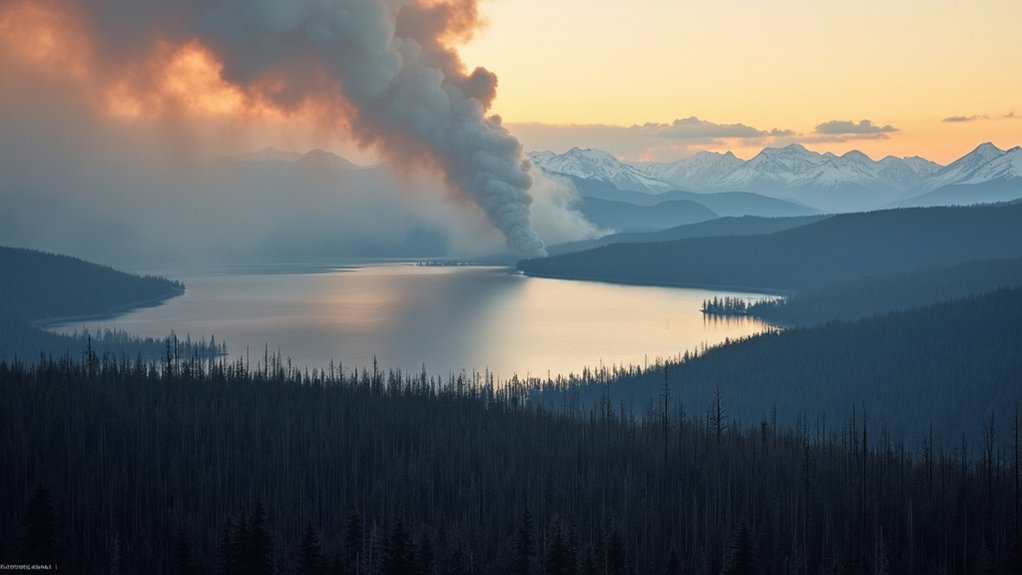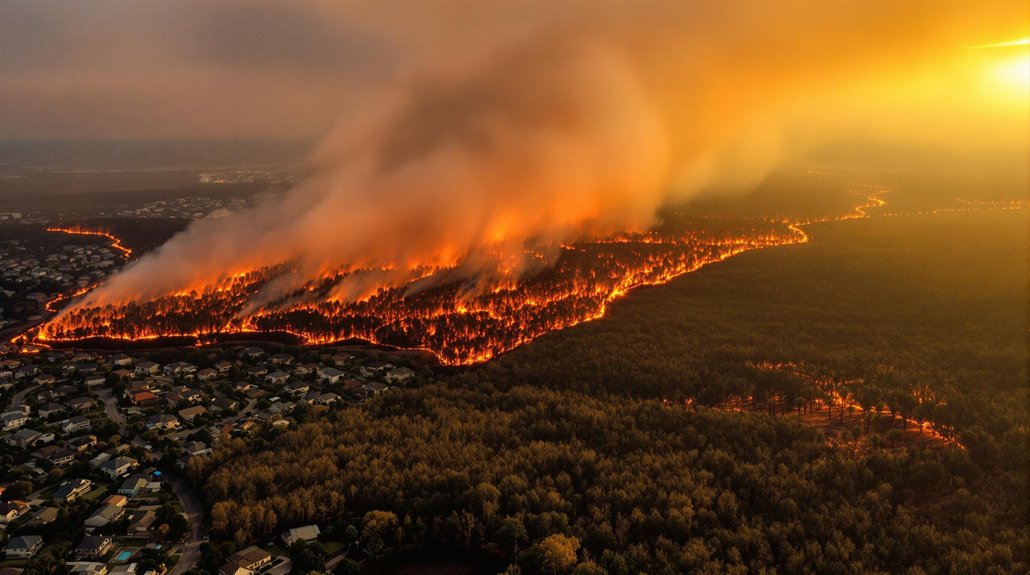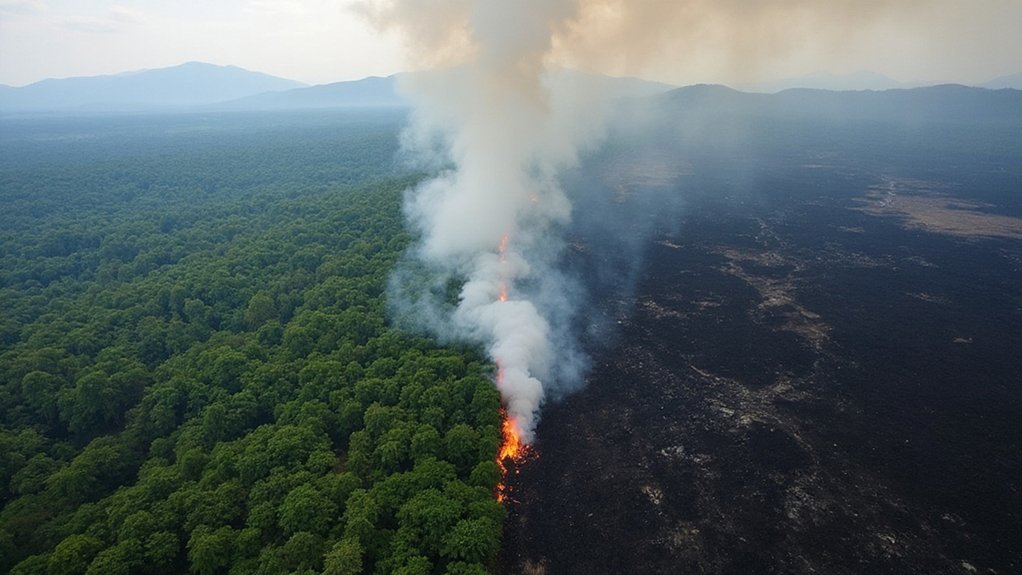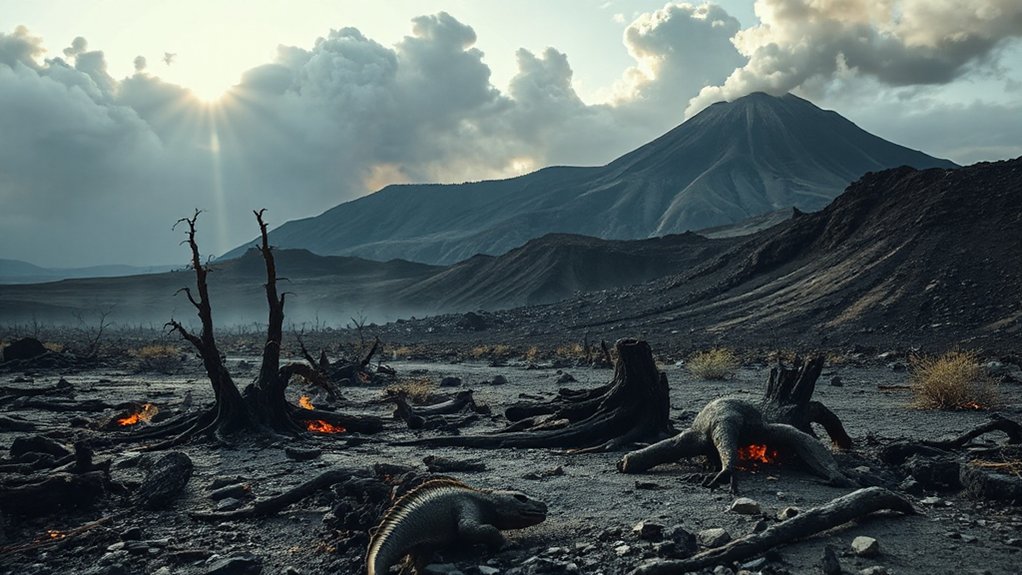While Canada typically braces for seasonal wildfires each year, 2025 is already showing troubling signs with 710 fires recorded to date—surpassing the 10-year average of 688. Funny how we’re still calling these things “seasonal” when they’re basically becoming year-round roommates we never invited. The Northwest Territories is leading the pack with a whopping 276 fires. Manitoba isn’t far behind with 110. It’s like a competition nobody wants to win.
Canada’s wildfire situation isn’t just bad—it’s becoming the uninvited houseguest who refuses to leave.
Here’s the weird part. Despite the higher number of fires, the total area burned sits at just 17,374 hectares—way below the 10-year average of 109,986. A silver lining? Maybe. But don’t get comfortable. Ontario’s already seen 59 fires torch through 10,668 hectares, while Manitoba’s lost 3,456 hectares to flames. Currently, Manitoba is managing a significant fire near Opaskwayak Cree Nation, which has already burned 5,000 hectares and forced evacuations. The math isn’t complicated. It’s bad.
Remember 2024? That was the year Canada watched insurance companies shell out a record $8.5 billion for weather disasters. The Jasper wildfire alone cost over $1.1 billion. Not exactly pocket change. The annual losses from these catastrophic events now average $706 million. That’s a 740% increase compared to the previous decade. Let that sink in.
The experts at MyChoice aren’t just throwing darts at a map. They’ve developed city-level risk scores using forecast severity ratings and anomalies. Kenora, Ontario? Risk score jumped from 5.4 to 6.2 in just one year. Timmins, Sudbury, Barrie—all on the high-risk list.
Events we used to call “once-in-a-century” now show up like unwanted relatives at Christmas dinner. Every. Single. Year. British Columbia’s already dealing with evacuations in Fort St. John, and it’s only May. Global Forest Watch has logged 668 high-confidence fire alerts across Canada.
The Canadian Interagency Forest Fire Centre is monitoring the situation. They’re tracking weekly progression. They’re collecting data. Interagency mobilization data shows a peak of 1125.2 aircraft deployed during critical weeks. Meanwhile, communities prepare for what could be another record-breaking season. Just another year in Canada’s new normal.









